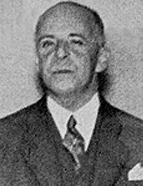

A military reservist, Gastão de Mello de Mattos began to engage in intellectual pursuits around the age of 40, taking part in significant scientific events both internationally and nationally, such as the International Congresses of Prehistoric and Protohistoric Sciences, held in Lisbon (1932), Oslo (1937), and Porto (1942), as well as the Congress for the Progress of Sciences in Spain (Córdoba (1944) and San Sebastián (1947). Perfectly aligned with the ideological and cultural programme of the Estado Novo regime — which emphasised the glorification of foundational dynastic events like the Battle of Aljubarrota (1385) or the Restoration (1640) — his works on military and political history were also featured in the Congress of Portuguese Expansion in the World (1938) and in the celebrations for the Centenary of the Restoration and the Congress of the Portuguese World (1940). His patriotism turned him into a figure particularly liked by the nationalism promoted by the Estado Novo (E. Dias, "História Militar" [Military History]). Mattos collaborated actively with many periodicals, including Acção Realista, Brotéria, Arqueologia e História, Diário da Manhã, Diário Popular, the Journal of the Associação dos Arqueólogos Portugueses [Portuguese Archaeologists Association], Feira da Ladra, Ilustração Portuguesa and the Guimarães Journal. His scientific maturity, however, was evident in his contributions to significant collective works such as the Enciclopédia Luso-Brasileira de Cultura [Luso-Brazilian Encyclopaedia of Culture] (1963), Heráldica (1969), and the Dicionário de História de Portugal [Dictionary of the History of Portugal] (1971). He authored nearly two dozen entries that remain fundamental to military historiography today, with special recognition given to those he wrote on "weaponry", "artillery", "battle", "crossbowmen", "captain", "colonel", "army", "infantry", "fortification", and "military ranks", etc. These collaborations reflect the intense and multifaceted nature of his work, centred on his primary areas of interest. These interests, evident in the first two decades of his scientific output, focused on military, political, and diplomatic history, with occasional forays into cultural, religious, and heraldic topics, primarily within the Modern period. Works such as "Notícia de alguns memorialistas portugueses no princípio do século XVIII" [News of some Portuguese memorialists at the beginning of the 18th century] (1929), "Nota sobre os postos no exército português..." [Note on ranks in the Portuguese army...] (1930), and "O significado político da Restauração" [The political meaning of the Restoration] (1943) are just a few examples of topics he covered. Nicolau Langres e a sua obra em Portugal [Nicolau Langres and his body of work in Portugal] (1941) was his first major work, a publication showcasing for the first time the collection of plans and projects for 17th-century fortifications by French engineer Nicolau de Langres, who arrived in Lisbon in 1644, held at the National Library of Portugal, a study that was pioneering in Portugal when it comes to research on the "science of fortifications" (G. M. Mattos, Nicolau Langres …, 1941, p. 11).
This work is financed by national funds through FCT - Foundation for Science and Technology, I.P, in the scope of the projects UIDB/04311/2020 and UIDP/04311/2020.
